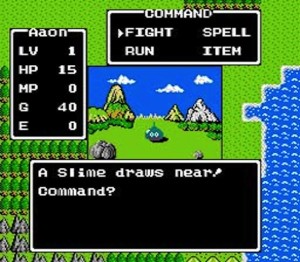The current unreleased working version of the Hazard System uses six potential outcomes which are then interpreted relative to the current turn type. The four turn types, from most abstract to least abstract, are Haven, Wilderness, Dungeon, and Combat. The six outcomes, mapped to the sides of the 1d6 Hazard Die, are 1) Setback, 2) Fatigue, 3) Expiration, 4) Locality, 5) Percept, and 6) Advantage. This unifies the set of potential outcomes so referees need learn fewer exceptions. Additionally, the order roughly ranks the outcomes from most negative (Setback) to most positive (Advantage) taking the perspective of player characters.
Previous versions of the Hazard System only used the Hazard Die for Haven, Wilderness, and Dungeon Turns, not Combat Turns. This makes sense genealogically given that the Hazard System was adapted from the Overloaded Encounter Die which was inspired by traditional random encounter checks. However, there are uncertain outcomes that require dice resolution during combat regularly, such as initiative, so perhaps the Hazard Die can subsume the resolution of uncertainty at all levels of abstraction.
It is not hard to find analogues in combat for most of the Hazard Die outcomes. For example, Setback could mean that reinforcements arrive or the opponents act first. Fatigue could be general attrition, such as all engaged combatants taking a point of damage. Locality could be any kind of change on the battlefield, such as a door being locked or a table overturned. Percept could be information telegraphing an opponent’s future strategy. Advantage could be an additional move per player character or a forced morale check for the enemy.
This set of outcomes does not replicate the probabilities of initiative in the same way that the wilderness travel or dungeon exploration applications of the Hazard Die replicates the chance of having an encounter. As described above, opponents have only a 1 in 6 chance of acting first, compared to the traditional 50/50 odds. Whether this is a problem will depend on how one sees the purpose of initiative. If the point of initiative is to inject some regular uncertainty and tension into combat, then it seems like the set of abstract Hazard Die results should serve the same purpose while also increasing combat dynamism through variety of events.
Another benefit I see of overloading the initiative die is that some other aspects of combat, such as morale, which are easily overlooked but quite beneficial to the dynamics of play, can be potentially built into regular game procedures. I am not sure if a 1 in 6 chance of opponent morale check (on the Advantage Hazard Die result) is the best way to do this but it seems promising. Are there any other combat events that deserve a place in the Combat Turn Hazard Die interpretation guidelines?
As with most systems that replace bookkeeping with probabilities, such as tracking ammo abstractly, there are absurd edge cases. What if your torch runs out on the first turn in the dungeon? What if you run out of arrows immediately? I see three solutions to this sort of problem: 1) use rulings based on fictional appropriateness, 2) use illogical results as a kind of oracle demanding explanation, or 3) make the system more complex to handle such edge cases reliably. I lean toward option 1 and away from option 3. In my opinion, it is no particular shortcoming in the system to rely on the referee to determine whether it makes sense fictionally for reinforcements to arrive in any given instance. Illogical results can also just be ignored occasionally given that doing so just falls back to the traditional mode which works reasonably reliably.
More concretely, my current play test interprets Combat Turn Hazard Die outcomes as:
- Setback: opponents act first or reinforcements arrive
- Fatigue: combatants engaged in melee suffer 1 point of damage
- Expiration: some or all ongoing effects end (such as burning oil)
- Locality: the battlefield changes in some way
- Percept: players gain some clue to opponent strategy
- Advantage: players choose extra action or forced morale check
(Post image is only mildly relevant, but hey it’s combat right?)


You seem to have your own system for tracking this, but I made one of the Combat Hazards a “risk of weapon/armor breakage” and on a roll equal or under the quality the weapon degrades one step (heavy weapon–>medium weapon damage) for example. Light weapons break entirely.
@Lee
I usually roll the hazard die for the group as a whole. If you build breakage possibility into the hazard result, how do you decide which player character is affected? I like the idea though. The procedure I have settled on using the low end of the attack roll works but also still feels like another step to remember.
The way I have run it is by having the Jeopardy Round affect the whole party, but its only the first party member to roll a break who is actually affected. It slightly penalizes the highest initiative roll which I’m ok with; I tend to resolve monster attacks in reverse initiative to partially mitigate that penalty.
Pingback: Daniel’s Encumbrance – Detect Magic
Pingback: Dungeon Exploration Procedures – Campaign Under Deconstruction